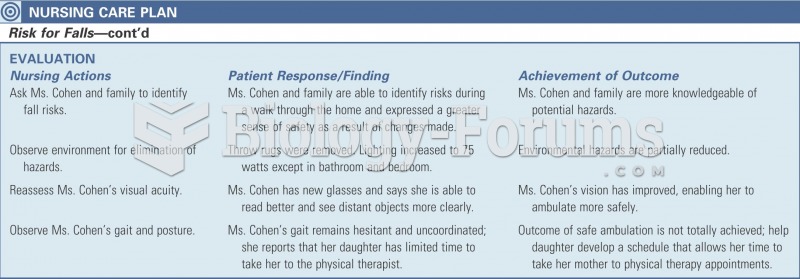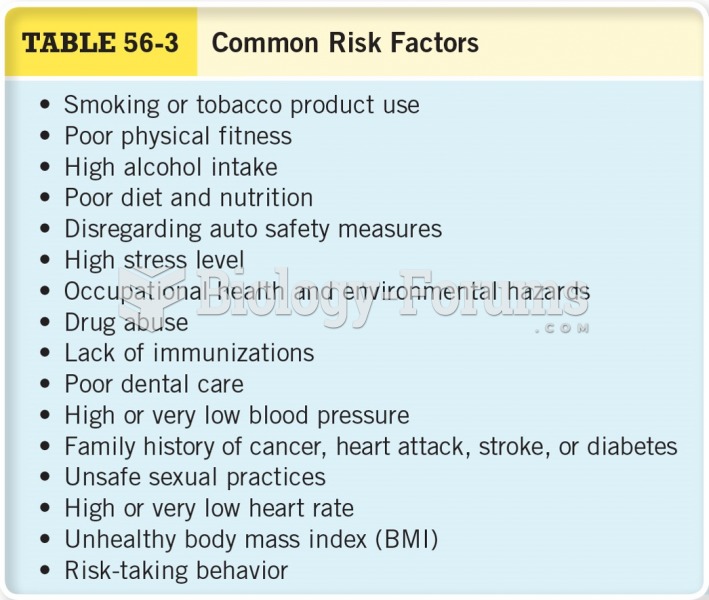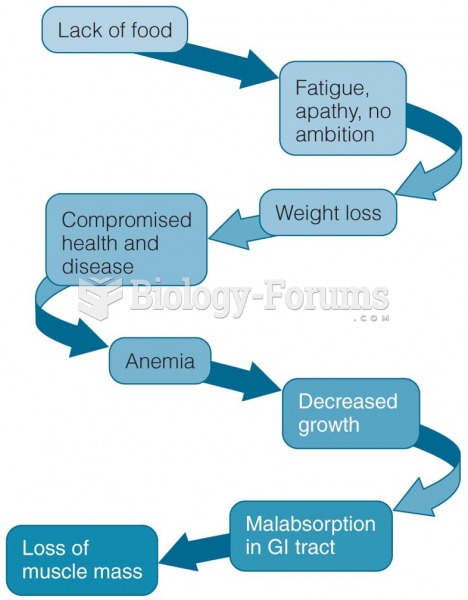|
|
|
Vaccines prevent between 2.5 and 4 million deaths every year.
On average, the stomach produces 2 L of hydrochloric acid per day.
Pubic lice (crabs) are usually spread through sexual contact. You cannot catch them by using a public toilet.
Glaucoma is a leading cause of blindness. As of yet, there is no cure. Everyone is at risk, and there may be no warning signs. It is six to eight times more common in African Americans than in whites. The best and most effective way to detect glaucoma is to receive a dilated eye examination.
When intravenous medications are involved in adverse drug events, their harmful effects may occur more rapidly, and be more severe than errors with oral medications. This is due to the direct administration into the bloodstream.





